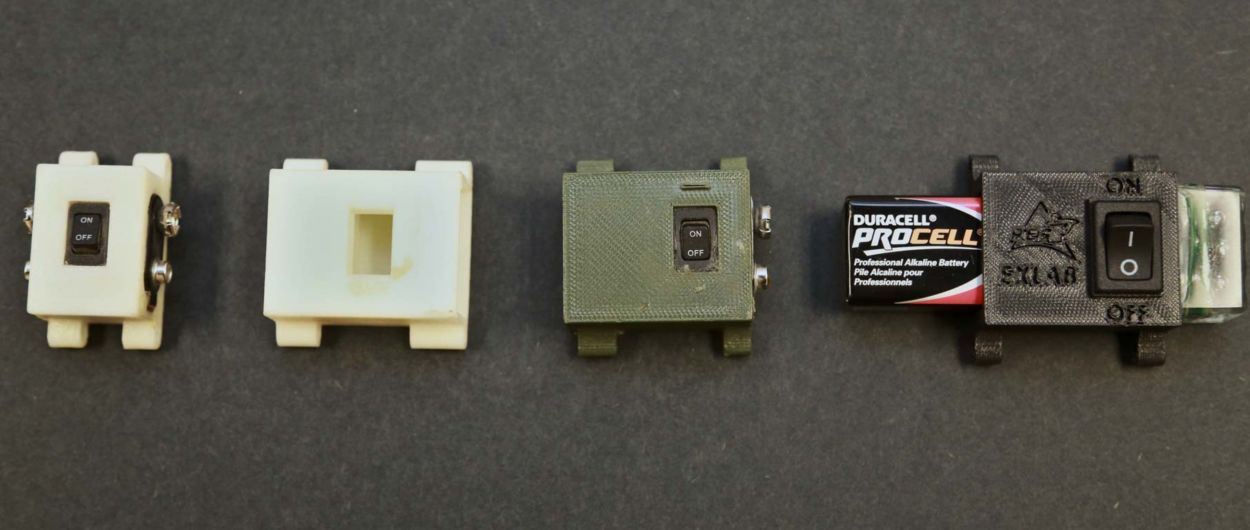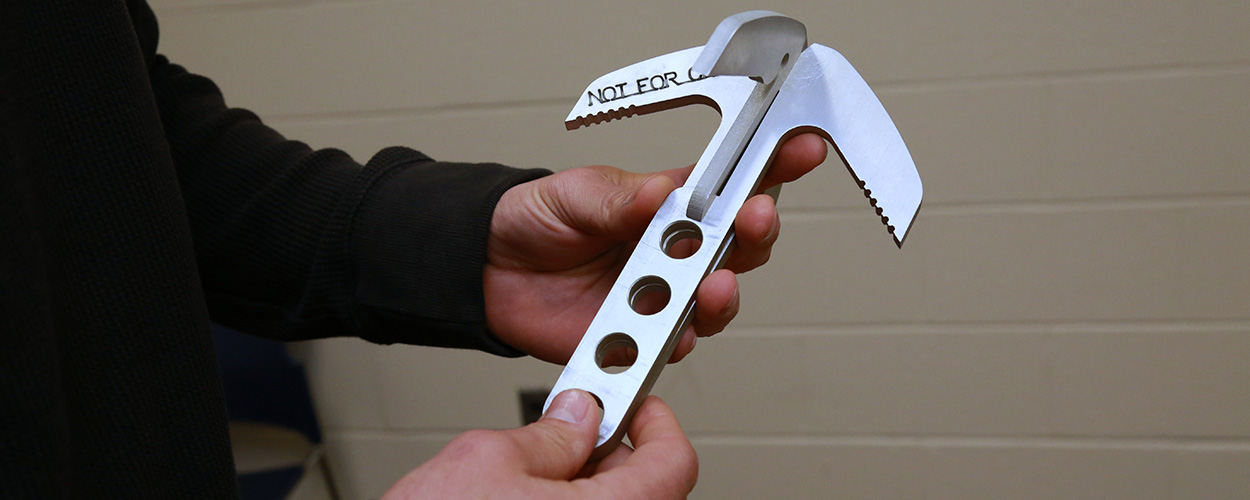Expeditionary Lab Provides the Right Tools for the Job
Expeditionary Lab Provides the Right Tools for the Job
By Shawn Nesaw
Deep in Afghanistan a small team of engineers works for the warfighter in the most literal sense of the phrase. The team runs the Expeditionary Lab (Ex Lab) operated by the U.S. Army Rapid Equipping Force (REF) and supported by U.S. Army Combat Capabilities Development Command (CCDC) Chemical Biological Center engineers.
Their mission is to work directly with U.S. Army forces deployed globally to develop and provide specialized equipment in a very short period of time using the best technologies available.
The REF currently operates one Ex Lab in Afghanistan and can deploy a second lab anywhere in the world as needed. A team of engineers mans the lab, meets with Soldiers, and creates specialized equipment based on the Soldiers’ immediate requirements.
The REF started deploying engineers and scientists to work directly with Soldiers in combat zones more than 16 years ago. The Ex Lab has been deployed since 2012. In 2014, REF began leveraging the capabilities of CCDC Chemical Biological Center to support the Ex Labs.
Since then, CCDC Chemical Biological Center has helped make the Ex Lab a success by providing critical support such as project management, dedicated reachback, fabrication, engineering design and training.
The Ex Lab is a unique capability for both the Army and DoD in its ability to quickly design, fabricate, test, and equip custom materiel solutions in a matter of hours to days, all within a combat zone.
“We can usually turn around projects within a few days,” explained Angel Cruz, Ex Lab project lead at CCDC Chemical Biological Center. “It all depends on the complexity of the project and what materials we have on hand. It takes a smart, flexible and dedicated team supported by a strong network to achieve the results of the Ex Lab.”
The Ask
In the field, Soldiers typically have access to what they need to complete their mission. However, from time to time, Soldiers find themselves in need of a specific tool or widget to help with a persistent or unique problem or to solve a one-off specific need. In such cases, Soldiers can meet with an Ex Lab engineer to discuss their need and develop a requirement.
“The lab has an open door policy so Soldiers literally walk into the lab throughout the day to meet with the engineers. If a Soldier isn’t located near the lab, they can call, email, or arrange for an engineer to travel to them to see their issues first hand,” explained Cruz.
When a Soldier submits a request, the on-site REF team chief reviews it and, if approved, the project becomes the responsibility of the lead engineer. The engineers will determine the best solution for the project, design it, obtain approval from the Ex Lab team and the requestor, and then move on to fabrication and testing.
The Ex Lab handles most requests on-site and in short order. To make this happen, the Ex Lab is outfitted as a high-end fabrication shop, including welding and machining tools; 3D printers; 3D scanners; electronic, textile and thermoplastic equipment; hand and power tools; raw stock and materials; powerful computers and software; and, most importantly, talented engineers.
“Our engineers in the field are highly valuable assets and pivotal to successfully meeting the Soldiers’ requirements,” said Cruz. “It takes a special breed of engineer to thrive in a combat zone. They are consistently required to think outside the box. We are asking them to not only design on the fly but then to build their own designs. They’re downrange, meeting with Soldiers and seeing the issues first hand, collecting data, designing and perfecting the designs and doing the fabrication. If they can complete the entire project on-site – great! But if not, our team here at the Center will do what it takes to support them and make it happen.”

Reachback Support Process
The Ex Lab has vast capabilities for a transportable design and prototyping lab, but still has limits. With such a small footprint downrange, and only so many hours in a day, the Ex Lab has dedicated reachback support provided by the Advanced Design and Manufacturing (ADM) business unit at the Center.
The lead engineer can request reachback support at any time, for any reason – whether they don’t have the data, subject matter expertise, proper machinery, or just not enough time. ADM will provide what they need either organically or sourced from another research and development center within CCDC.
A good example of reachback support was for a K9 dog leash cradle the Ex Lab 3D printed on-site in Afghanistan. Ex Lab engineers used a process called fused deposition modeling, the most common 3D printing process and the only 3D printing process the lab possesses, to create the leash cradle but the K9s were causing failures in the parts. The Ex Lab sent the design back to the Center for revision.
“Due to the low quantity needed, we determined in-house plastic injection molding wasn’t cost effective so we printed the parts using a completely different and stronger process and material,” explained Cruz. “Once completed, we painted and shipped the finished product back to the Ex Lab to equip them.”
ADM’s support doesn’t end with reachback, however. They are also responsible for keeping the Ex Lab fully operational. This includes staffing the lab with Department of the Army civilians and contractors, providing deployment training, remote troubleshooting and training, engineering design, reverse engineering, IT support, marketing, writing and managing various contracts, equipment maintenance, procurement and shipping of supplies, inventory tracking, and overall technical management of the Ex Labs.
“One of the best aspects of the Ex Lab is every day is different,” said Cruz. “Soldiers come in daily with requests, sometimes multiple times per day, all with completely different requests.
We never know what the next knock on the door will bring.” Among the most recent requests to come into the Ex Lab were a quick way to secure payloads to an unmanned aircraft system, a custom radio operator backpack, and a vehicle mount for a handheld radio. All three requests became new Ex Lab projects.
And the requests are varied, from textiles and electronics to concealment devices to tools and other hard goods. “If a Soldier is completing maintenance on a vehicle and needs a specific grease gauge, we can design and 3D print one in a couple of hours for the Soldier,” explained Cruz.
Soldiers have a variety of missions that require specialized skillsets and equipment to ensure success and enemy overmatch. CCDC Chemical Biological Center and The Ex Lab are in-field, ready to provide the Army with superior prototyping and development support to ensure Soldiers are equipped with the right tools to complete their missions.
After a brief meeting with a Soldier, Ex Lab engineers developed this trip line hook which breaks down to lay flat when not in use.
Photo by Shawn Nesaw.

